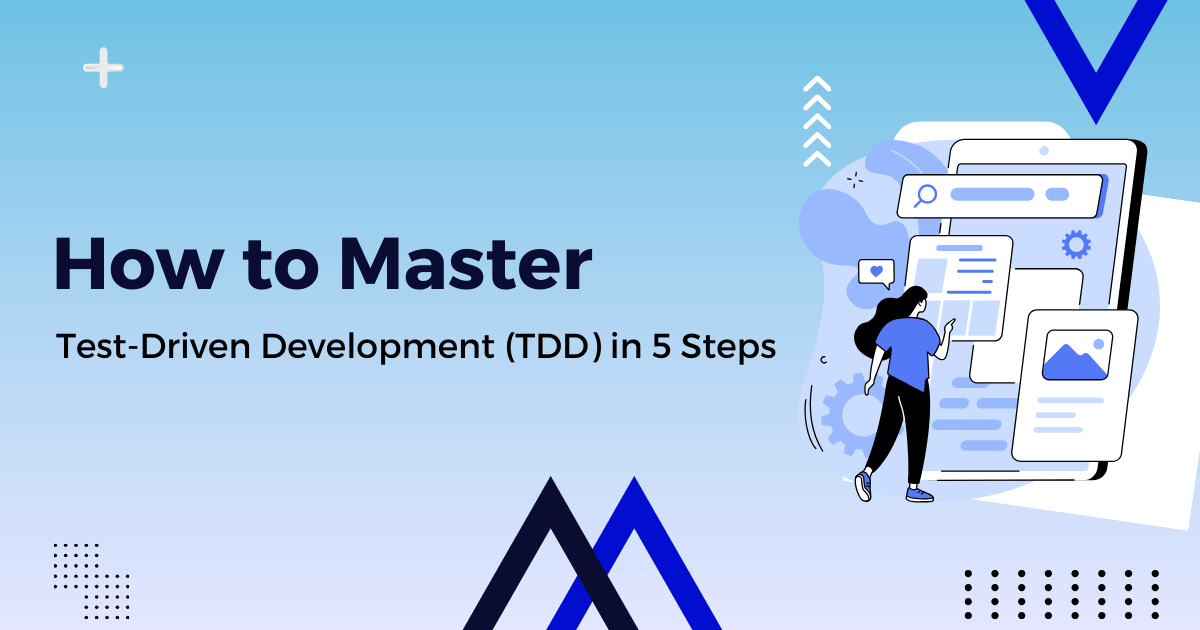There are hundreds of ways to develop software. Or write code in general. The good ways, however, are few.
One of those good ways is to use Test-driven development (TDD). What is TDD? Why is it important? What are the steps involved in TDD software development?
Find answers to all these questions in this blog right here.
Table of Contents
What is Test-Driven Development (TDD)?
Test-driven development (TDD) is a software development practice that emphasizes writing tests before writing the code itself.
The cycle is simple.
Write a test. See that it fails. Write the minimum amount of code to pass the test. Refactor the code to improve its design, and repeat.
This iterative approach has gained widespread popularity because it ensures code reliability, and maintainability, and enables rapid development.
Let’s see what steps you should follow for successful software development with TDD.
Step 1: Understand the TDD Cycle
Before diving into writing tests, it’s crucial to grasp the TDD cycle thoroughly.
The cycle typically involves three steps:
1.Write a failing test
Start by defining a test case that describes the desired behavior of the code. This test should initially fail since the corresponding code hasn’t been implemented yet.
2. Write the minimal code
Implement the code necessary to pass the test. Resist the temptation to write more code than necessary to pass the test. Focus on keeping the code simple and functional.
3. Refactor
Once the test passes, refactor the code to improve its design, readability, and performance. Ensure that all tests still pass after refactoring.
Ready to enhance your software quality and accelerate your time to market? Contact us today at sales@stelotechnology.com to request a customized quote for your business!
Step 2: Choose the Right Testing Framework
Selecting the appropriate testing framework is essential for successful TDD implementation. Popular testing frameworks such as JUnit for Java, NUnit for .NET, and Jasmine for JavaScript offer robust features and seamless integration with development environments.
Familiarize yourself with the chosen framework’s syntax, conventions, and capabilities to streamline the testing process effectively.
Step 3: Start Small and Iterate
Begin your TDD journey by tackling small, manageable tasks. Break down complex problems into smaller units and write tests for each unit incrementally. Starting small allows you to focus on one piece of functionality at a time, making it easier to write tests and code iteratively.
As you gain confidence and proficiency, gradually increase the scope of your tests and codebase.
Step 4: Write Clear and Expressive Tests
Crafting clear, expressive tests is essential for effective communication and understanding among team members. Write test cases that are easy to read, understand, and maintain.
Use descriptive methods and variable names, meaningful assertions, and comments to convey the test’s purpose and expectations clearly. Well-written tests serve as documentation and specifications for the codebase, facilitating collaboration and future enhancements.
Step 5: Embrace Continuous Integration and Feedback
Integrate TDD into your development workflow seamlessly by leveraging continuous integration (CI) practices. Set up automated build and test pipelines that run tests automatically whenever changes are made to the codebase.
CI systems provide immediate feedback on code changes, identifying errors and regressions early in the development process. Embrace feedback from tests and refactor code iteratively to improve its quality and maintainability continuously.
Leveraging Test-Drive Development: Getting Started
By following these five actionable steps outlined in this blog, you can get successful software developed with the TDD approach.


